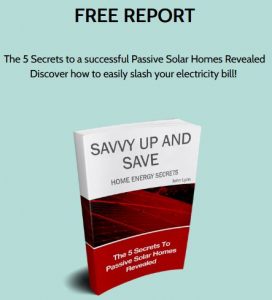NatHERS (Nationwide Home Energy Rating Scheme), uses three approved modelling software programs in which raw data, including a homes’ latitude, orientation, window type, size and placement, building materials, etc, etc, is entered for the program to analyse.
A large amount of information can be considered by these programs allowing adjustments to be made on the building plan before the proposed construction is approved and building commences. This procedure results in a home’s design scoring the highest star rating possible. The more stars the design scores, the more energy efficient the construction will be and the less electricity the new building is expected to require. Statistically between 40% and 50% of a household’s electricity expenditure is used for heating or cooling. Humans like to have the temperature within fairly tight margins.
Generally speaking, if the inside temperature of a home is 20° below zero, it probably needs heating and if it’s 45°, I suggest it would be more comfortable if it were made cooler. That’s just a suggestion, it’s not law. What is law, is that all new dwellings must have the designs modelled through one of these three programs to meet the NatHERS criteria.
 AccuRate, BERS (Building Energy Rating Scheme) or FirstRate5 are the three approved programs that model building design delivering a star rating out of 10 which readily identifies the energy efficiency of the proposed construction. New homes that have a 10 Star Rating are more energy efficient, actually quite a bit more energy efficient than the minimum 6-star rating of a standalone domestic home. But 99% of homes built in Australia before 2003 would be lucky to score 1 star. Since those homes represent the greater majority, nearly everyone in Australia is living in an energy guzzling home. Metaphorically speaking your home could be guzzling energy while you are reading this.
AccuRate, BERS (Building Energy Rating Scheme) or FirstRate5 are the three approved programs that model building design delivering a star rating out of 10 which readily identifies the energy efficiency of the proposed construction. New homes that have a 10 Star Rating are more energy efficient, actually quite a bit more energy efficient than the minimum 6-star rating of a standalone domestic home. But 99% of homes built in Australia before 2003 would be lucky to score 1 star. Since those homes represent the greater majority, nearly everyone in Australia is living in an energy guzzling home. Metaphorically speaking your home could be guzzling energy while you are reading this.
If you are living in a home built before 2003, your home may be one of these energy guzzlers. From an energy efficiency perspective, that is a problem. It’s a problem because you may be using a lot more electricity than you need to.
Luckily, there is indeed something you can do about it.
If you live in a home that requires very little heating or cooling, or better still none at all, you could statistically have half the electricity bill of the majority of other typical households by doing absolutely nothing more than living in the building.
 That is, moving out of the average Australian house into an energy- efficient home is going to cut your energy bill by 40 to 50% before you even get out of bed. It will be also easier to get out of bed in the wintertime because these homes are more thermally stable so the inside ambient temperature is closer to the “sweet spot”, where human’s like it than less energy efficient constructions. They are more comfortable to live in and because they generally use less energy, they are less expensive to live in.
That is, moving out of the average Australian house into an energy- efficient home is going to cut your energy bill by 40 to 50% before you even get out of bed. It will be also easier to get out of bed in the wintertime because these homes are more thermally stable so the inside ambient temperature is closer to the “sweet spot”, where human’s like it than less energy efficient constructions. They are more comfortable to live in and because they generally use less energy, they are less expensive to live in.
Who wouldn’t want one?
But not everybody can pack up and move to the next suburb or build a new home starting next Tuesday. Every family’s circumstances are unique so when addressing the issue of an established home’s energy inefficiency, a unique approach that considers every family’s circumstances must be considered on a case by case basis. Quite possibly the only person who really knows your family circumstances well enough, would be a family member and certainly the only people who have the family’s best interests at heart would be a family member. Therefore, the best people to address the issue of an established family’s home’s energy efficiency are the people who live in those homes. As you can well imagine the details involved in fixing up an existing building to improve its thermal performance can be quite extensive and also expensive. Luckily there are just a few major considerations, that, when addressed appropriately, can have a significant impact on improving the homes thermal performance.
Because everyone’s situation is different, only someone who is close to the problem can decide what’s best for them.
To get close and discover the simple secrets that make the biggest difference, simply access the full report by clicking here … (its free) >>>LEARN MORE>>>
John Lynn
